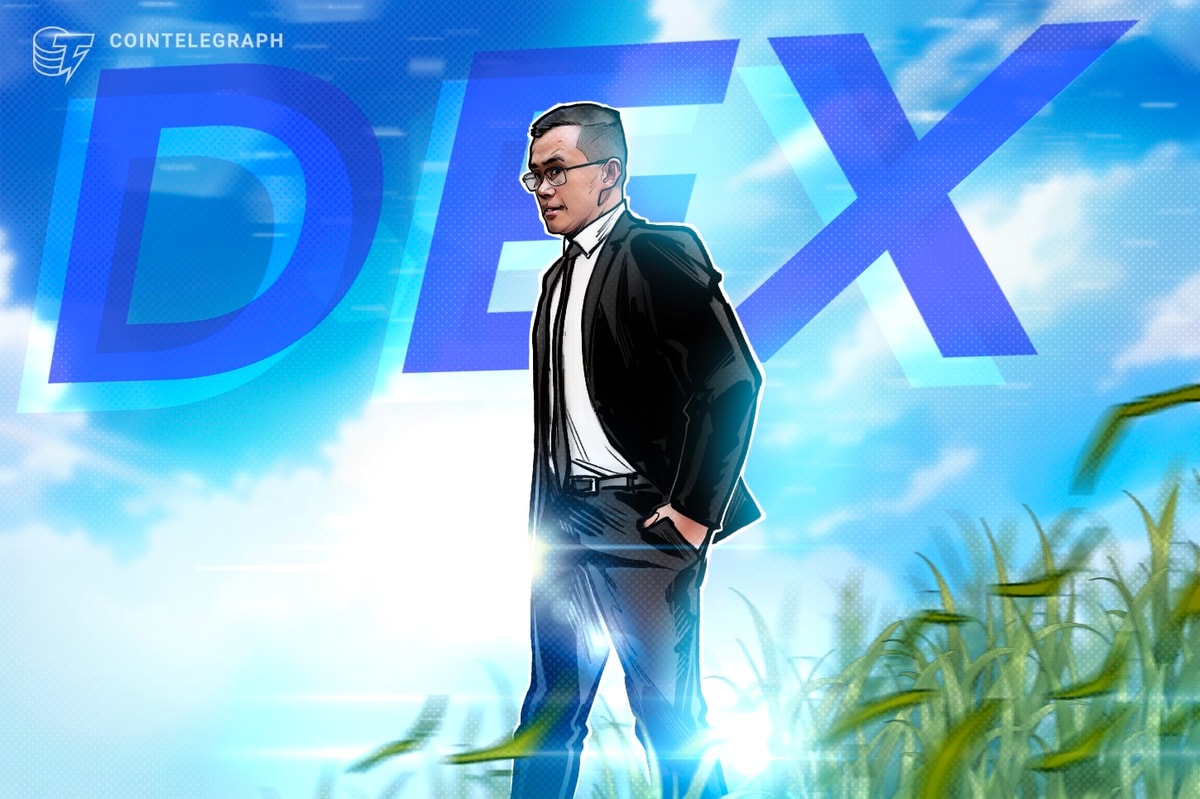
Making a Chipotle burrito in the metaverse isn’t so different from making a real one.
Players on the fast-food chain’s Roblox game use their computer mouses to drag and drop ingredients from the virtual counter to an open-faced burrito. White rice, black beans, garlic guajillo steak, mild salsa, cheese. The timer starts. Five, four. Fold the burrito corners using the keyboard arrows. Three, two. Make the final roll using the “up” arrow. One. Next burrito.
When entering the Burrito Builder game, a prompt tells players they’ve been transported to the first Chipotle, created in 1993. The digital restaurant looks like the real location, down to the writing on the menu. Surrounding the restaurant is a series of Chipotle-inspired stores—BurritoBuster, Carnitas Cinema and Tortilla Records—as well as houses and a park.
On Roblox, Chipotle has digitized the experience of working at a real-life restaurant. More than 4 million users played the game its first week, and more than 17 million have since then. It follows Chipotle’s first metaverse experience, released six months earlier—a maze to earn virtual merchandise and free burritos at real-life restaurants—to accompany its Halloween-themed Boorito marketing.
Companies are experimenting with the unproven technology
The metaverse is hyped but its value is unproven, and companies are experimenting with the new technology by creating games and marketing experiences in virtual worlds. In Spotify Island on Roblox, players collect heart-shaped icons to unlock merchandise. In the Sandbox, another metaverse platform, users can play games to learn about Gucci’s company history. Mr Clean was in the metaverse as well—in a temporary experience created by Procter & Gamble and French retailer Carrefour—where users could assist the mascot with household chores.
The revenue companies earn from these experiences is miniscule. Metaverse experiences instead position companies as innovators and heighten brand awareness, particularly among young consumers and consumers-to-be.
The metaverse has its skeptics, but so did the internet in the 1990s and social media in the 2000s, said Angie Kamath, a New York University dean who leads the school’s Metaverse Collaborative. But the metaverse is real, she said, and it isn’t just an alternate reality where everyone will live and work—a popular conception of the metaverse. It is simply a digital extension of what already exists, according to Kamath.
While it allows public relations executives to engage with consumers, it also offers medical procedure simulations, hands-on manufacturing training and other educational experiences. All of the metaverse’s uses have their values, she said.
“Like companies need to be on YouTube and Instagram, it’s starting to be the case where brands need to be on Roblox,” said Joe Ferencz, CEO of Gamefam, a video game developer with the most visited branded game on Roblox.
For many of these companies—like fast-food chains—a move into the metaverse isn’t implicit in their business strategies. Retail companies can sell digital clothes for digital avatars, but restaurants can’t sell digital food with the same effect. They often don’t have in-house teams with expertise in metaverse technology, including blockchain, cryptocurrency and non-fungible tokens. It takes time, money and personnel to launch a metaverse game, and because the technology is so new, there isn’t a clear set of instructions on how to do so. Though Chipotle released its first experience in October 2021, conversations about the company’s role in the metaverse began much earlier.
Making plans in the metaverse
Chipotle’s digital team creates marketing campaigns, launches menu items and plans holiday deals. Team members spend time brainstorming new ideas, which are often pitched as parts of campaigns. Roblox was on the team’s mind for a few years, since many employees had children who spent time on the site, said Chris Brandt, Chipotle’s chief marketing officer.
Roblox had around 16 million daily active users at the start of 2019, which doubled by mid-2020 as the pandemic drove people online. About 85 percent of Roblox’s users are Gen Z, with two-thirds below the age of 16.
Years ago, the team noticed Roblox users were already creating Chipotle-inspired games, merchandise and restaurants on the site. This gave them confidence that if they launched something on the platform, it would be well-received by its users.
Chipotle team members pitched various campaigns with metaverse components but ultimately kept the ideas in their back pockets until the time was right.
In Summer 2021, Brandt and his team began planning for Chipotle’s Boorito event. For more than 20 years, customers who visited Chipotle on Halloween wearing a costume received a discounted meal. Due to the pandemic, this promotion went online for the first time in 2020. With Covid still a limiting factor in 2021, Boorito would again be online. It was the perfect time to start making plans for Roblox, which by then had grown to 43 million daily active users.
“Candidly, I was skeptical at first,” Brandt said. “When brands start designing and building their own experiences, there’s a lot of potential for them to not be cool.” And if that was the case, Brandt said he wouldn’t launch it.
Chipotle made a deal with Roblox and hired a third party game developer, though the company wouldn’t disclose which one.
There isn’t a huge financial investment that goes into making a game on Roblox, said Michael Daubert, CEO of Phaser Lock Interactive, a video game development company. Roblox games are free to make and upload. The platform and game developers typically take a cut of the transactions that occur in each game, such as when players buy game-related merchandise.
Developers are experts in creating textures, characters and realistic animation. For a small and relatively easy project, which Daubert categorizes Chipotle’s experiences as, a developer would charge a minimum of $100,000. He estimated it would take three to four months to complete with a team of around 10 people.
In addition to Roblox being a cheaper platform to use, companies might gravitate towards it because Roblox doesn’t shy away from commercialization, he said. Its users don’t mind seeing advertisements, while players on other video game platforms like PlayStation might object. Roblox didn’t respond to the Observer’s interview requests.

Chipotle’s Boorito event drove record impressions
Chipotle’s digital team knew Roblox users liked the play-to-earn model and games that simulated work. And rolling burritos could easily be gamified. One idea that floated around the group for Boorito was to have users roll burritos in the platform and earn Burrito Bucks, the company’s digital currency, to exchange for free meal promotion codes. But it wasn’t right for Boorito. The team wanted to focus on the “fun and legacy of the Boorito promotion” rather than creating a new game that had little to do with the event, said Candice Beck, who works on Chipotle’s national promotions, social media and influencer marketing. The team settled on creating a spooky maze, and tucked the simulated work idea away for a later date.
Roblox crashed within an hour of the Boorito experience launching on Oct. 28th. The site was down for 73 hours, and the timing of the crash led to a slew of memes blaming Chipotle for the outage. Roblox released a statement clearing Chipotle of blame and said its own servers caused the error.
It could have been a blessing in disguise, Brandt said. Chipotle extended the promotion and received more than 4 billion impressions from the event, he said.
From a public relations perspective, Boorito was a success. It got Chipotle a ton of publicity and made the company an active player in the metaverse, Brandt said. Halloween of 2021 still stands as the company’s No. 1 digital order day, and it is in Chipotle’s top 10 for customer enrollment in the rewards program.
The event also helped Chipotle connect with a younger customer base. “We wanted to make it relevant to Gen Z because the tradition of coming into the restaurant in costume and getting a free burrito was really a millennial one,” said Beck.
“Once we entered the metaverse, we knew there was no going back,” she said.

Chipotle turned play-to-earn into play-to-eat
The team began talking about another metaverse experience immediately after Boorito. They wanted something that didn’t rely on the season—like the Halloween-themed Boorito—something that emphasized retention and an experience they could update, said Jenny Williams, who works on Chipotle’s digital team. That’s when the simulated-work idea resurfaced.
With the same game developer, the team created Chipotle Burrito Builder. Players win free digital merchandise when they complete games. To earn additional Burrito Bucks, players can deliver food throughout the surrounding neighborhood. When the game launched in April 2022, during National Burrito Day, Chipotle received its second-highest digital order day of all time behind the Boorito event.
The team updated the experience in September with the launch of Chipotle’s new menu item. The garlic guajillo steak first appeared on Roblox, which “gave people first access to try the menu item on the platform,” Williams said. The first 25,000 players to successfully grill the new steak in the simulation earned a free garlic guajillo steak meal in real life.
The average time spent in the game for the promotion was 10 minutes, “which is longer than people even spend in the restaurant,” Williams said. It marked the highest social volume for a new menu item in Chipotle’s history.
The Chipotle team is continuing to discuss updates and new metaverse experiences, Williams said. “We are seeing activations on Roblox have real business impacts.”

Read More: news.google.com









 Bitcoin
Bitcoin  Ethereum
Ethereum  Tether
Tether  XRP
XRP  Solana
Solana  USDC
USDC  Dogecoin
Dogecoin  TRON
TRON  Cardano
Cardano  Lido Staked Ether
Lido Staked Ether  Wrapped Bitcoin
Wrapped Bitcoin  Sui
Sui  Hyperliquid
Hyperliquid  Wrapped stETH
Wrapped stETH  Chainlink
Chainlink  Avalanche
Avalanche  Stellar
Stellar  Bitcoin Cash
Bitcoin Cash  Toncoin
Toncoin  LEO Token
LEO Token  Shiba Inu
Shiba Inu  USDS
USDS  Hedera
Hedera  Litecoin
Litecoin  WETH
WETH  Monero
Monero  Wrapped eETH
Wrapped eETH  Polkadot
Polkadot  Binance Bridged USDT (BNB Smart Chain)
Binance Bridged USDT (BNB Smart Chain)  Ethena USDe
Ethena USDe  Bitget Token
Bitget Token  Pepe
Pepe  Pi Network
Pi Network  WhiteBIT Coin
WhiteBIT Coin  Coinbase Wrapped BTC
Coinbase Wrapped BTC  Dai
Dai  Uniswap
Uniswap  Aave
Aave  Bittensor
Bittensor  Ethena Staked USDe
Ethena Staked USDe  Cronos
Cronos  OKB
OKB  Aptos
Aptos  NEAR Protocol
NEAR Protocol  Jito Staked SOL
Jito Staked SOL  BlackRock USD Institutional Digital Liquidity Fund
BlackRock USD Institutional Digital Liquidity Fund  Ondo
Ondo  Internet Computer
Internet Computer  Ethereum Classic
Ethereum Classic